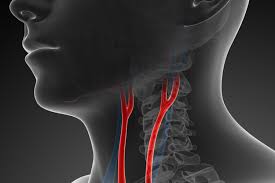The Importance of Carotid Endarterectomy in Preventing Stroke
Carotid endarterectomy is a surgical procedure designed to remove plaque buildup from the carotid arteries, which are located in the neck and supply blood to the brain. This procedure is crucial in preventing strokes, as plaque buildup can restrict blood flow to the brain, leading to a higher risk of stroke.
During a carotid endarterectomy, a surgeon makes an incision in the neck to access the carotid artery. The plaque is then carefully removed, restoring proper blood flow to the brain. This procedure is typically recommended for patients who have significant blockages in their carotid arteries or who have already experienced transient ischemic attacks (TIAs) or minor strokes.
Carotid endarterectomy has been shown to significantly reduce the risk of stroke in high-risk patients. By clearing blockages and improving blood flow to the brain, this procedure can help prevent future strokes and improve overall quality of life. It is considered a safe and effective treatment for those at risk of stroke due to carotid artery disease.
It is important for patients to discuss their individual risk factors with their healthcare provider to determine if carotid endarterectomy is the right course of action. Factors such as age, overall health, and severity of blockage will all be taken into consideration when deciding on the best treatment plan.
In conclusion, carotid endarterectomy plays a vital role in preventing strokes and reducing the risk of serious complications associated with carotid artery disease. By undergoing this procedure, patients can significantly improve their long-term health outcomes and reduce their chances of experiencing a debilitating stroke.
Six Essential Tips for Recovery and Prevention: Maximising the Benefits of Carotid Endarterectomy
- Carotid endarterectomy is a surgical procedure to remove plaque build-up in the carotid arteries, which are located in the neck.
- It is usually performed to reduce the risk of stroke in patients with significant blockages in their carotid arteries.
- Patients undergoing carotid endarterectomy may need to stay in the hospital for a few days for monitoring and recovery.
- After surgery, patients should follow their healthcare provider’s instructions for wound care and medication management.
- Regular follow-up appointments are important to monitor the patient’s recovery and assess the effectiveness of the procedure.
- Patients should also make lifestyle changes such as quitting smoking, eating a healthy diet, and exercising regularly to reduce their risk of future blockages.
Carotid endarterectomy is a surgical procedure to remove plaque build-up in the carotid arteries, which are located in the neck.
Carotid endarterectomy is a specialised surgical intervention aimed at addressing the accumulation of plaque within the carotid arteries situated in the neck. This procedure involves the meticulous removal of plaque build-up to restore proper blood flow to the brain. By targeting these blockages in the carotid arteries, carotid endarterectomy plays a crucial role in reducing the risk of stroke and enhancing overall vascular health.
It is usually performed to reduce the risk of stroke in patients with significant blockages in their carotid arteries.
Carotid endarterectomy is a surgical procedure commonly recommended to lower the risk of stroke in individuals with notable blockages in their carotid arteries. By carefully removing plaque buildup from these crucial blood vessels, this intervention aims to restore proper blood flow to the brain, thereby reducing the likelihood of a stroke occurring. This procedure is particularly beneficial for patients who have experienced transient ischemic attacks (TIAs) or minor strokes, as it helps mitigate the potential for more severe neurological events.
Patients undergoing carotid endarterectomy may need to stay in the hospital for a few days for monitoring and recovery.
Patients undergoing carotid endarterectomy may need to stay in the hospital for a few days for monitoring and recovery. This extended hospital stay allows healthcare professionals to closely monitor the patient’s progress, ensuring that any potential complications are promptly addressed. Additionally, it provides a controlled environment where patients can receive necessary care and support during the critical early stages of recovery. By staying in the hospital following the procedure, patients can rest assured that they are receiving optimal care to promote a successful and smooth recovery process.
After surgery, patients should follow their healthcare provider’s instructions for wound care and medication management.
After undergoing carotid endarterectomy, it is crucial for patients to adhere to their healthcare provider’s guidance on wound care and medication management. Following these instructions diligently can help promote proper healing of the surgical site and reduce the risk of complications. Patients should be vigilant in keeping the incision area clean and dry, as well as taking medications as prescribed to prevent infection and promote recovery. By following these post-operative care instructions closely, patients can ensure a smooth and successful healing process after carotid endarterectomy.
Regular follow-up appointments are important to monitor the patient’s recovery and assess the effectiveness of the procedure.
Regular follow-up appointments are crucial in the post-operative care of patients who have undergone carotid endarterectomy. These appointments play a key role in monitoring the patient’s recovery progress and assessing the overall effectiveness of the procedure. Through these follow-ups, healthcare providers can track any potential complications, ensure proper healing, and make necessary adjustments to the patient’s treatment plan if needed. By attending these appointments as scheduled, patients can receive ongoing support and guidance to optimise their recovery and long-term health outcomes following carotid endarterectomy.
Patients should also make lifestyle changes such as quitting smoking, eating a healthy diet, and exercising regularly to reduce their risk of future blockages.
Patients undergoing carotid endarterectomy should complement their treatment with essential lifestyle changes to enhance their overall health and reduce the risk of future blockages. Quitting smoking, adopting a nutritious diet, and engaging in regular exercise are key components in maintaining optimal vascular health. By making these positive lifestyle adjustments, patients can further safeguard themselves against the recurrence of blockages in their carotid arteries, promoting better long-term outcomes and reducing the likelihood of future cardiovascular complications.

